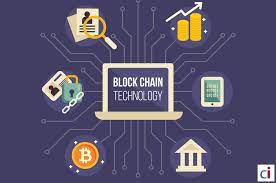Blockchain Technology has emerged as a promising tool in ensuring transparency in mobile apps, and the USA has taken significant initiatives in this regard.
Firstly, the USA’s regulatory bodies, such as the Securities and Exchange Commission (SEC) and the Federal Trade Commission (FTC), have shown an increased interest in blockchain’s potential to enhance transparency. They have begun exploring ways to leverage blockchain to verify app developers’ claims and track the usage of personal data. This can help protect consumers from fraudulent mobile apps.
Moreover, several American tech companies have been actively researching and implementing blockchain solutions to enhance transparency in mobile apps. These initiatives range from using blockchain for secure app distribution to creating decentralized identity systems that put users in control of their data.
Furthermore, some states, like Wyoming, have passed legislation to create a regulatory framework for blockchain technology, fostering innovation and accountability in the mobile app industry.
In summary, the USA is actively exploring blockchain’s potential to ensure transparency in mobile apps through regulatory initiatives and industry-driven solutions. This approach aims to strengthen consumer trust, protect user data, and foster innovation in the rapidly evolving mobile app landscape.
Blockchain Technology is revolutionizing mobile app security.

Blockchain technology is actively revolutionizing mobile app security. This transformative technology brings transparency, immutability, and enhanced trust to the mobile app ecosystem.
Firstly, blockchain ensures data integrity by creating a tamper-proof ledger of transactions. Mobile apps can utilize blockchain to record critical actions, such as user data access or software updates, making it nearly impossible for malicious actors to manipulate or falsify this information.
Secondly, blockchain enhances authentication and identity management. Instead of relying on traditional centralized systems, mobile apps can leverage decentralized identity solutions built on blockchain. Users gain more control over their personal information, reducing the risk of data breaches and identity theft.
Additionally, blockchain can streamline app distribution and updates. By utilizing smart contracts, developers can automate the deployment process, ensuring that only authorized and verified updates are pushed to users.
Furthermore, blockchain enhances app monetization by facilitating secure, transparent microtransactions and peer-to-peer payments, reducing the need for intermediaries and associated security risks.
In conclusion, blockchain technology, with its inherent security features and transparency, is actively reshaping mobile app security. Its potential to combat data breaches, improve identity management, and enhance the overall security posture of mobile apps makes it a pivotal innovation in the field.
Adding Blockchain Technology to your next mobile application

Heightened Security:
The incorporation of blockchain technology enhances the security of your mobile app. Blockchain’s decentralized architecture and cryptographic algorithms ensure data integrity and safeguard against unauthorized access, reducing the risk of data breaches and cyberattacks, which are common concerns in the mobile app ecosystem.
Transparency and Trust:
Blockchain fosters transparency by recording all transactions and interactions on a public ledger. This transparency builds trust among users as they can verify the authenticity of data and transactions within the app.
Data Ownership:
With blockchain, users gain greater control over their data. They can determine who can access their information and for what purposes, thereby improving privacy and giving users a sense of ownership.
Smart Contracts:
Blockchain’s smart contracts automate and enforce agreements within the app, reducing the reliance on intermediaries and ensuring that transactions occur as intended. This streamlines processes and cuts down on associated costs.
Immutable Records:
Data recorded on the blockchain is immutable, meaning it cannot be altered or deleted. This provides a dependable and auditable history of all app activities.
Efficient Payments:
Blockchain facilitates secure and efficient peer-to-peer transactions, enabling microtransactions and enabling new monetization models within your app.
Reduced Fraud:
The transparent nature of blockchain technology makes it difficult for fraudulent activities to go unnoticed, lowering the risk of scams and counterfeit interactions within your app.
Need for transparency and trust in data-driven decision-making for Blockchain technology

Transparency and trust are imperative in data-driven decision-making. In today’s data-centric landscape, the accuracy and reliability of information are paramount for informed choices.
Transparency involves openly sharing data sources, collection methods, and analytical processes. When decision-makers and stakeholders understand how data is gathered and processed, they are more likely to have confidence in the outcomes. This transparency helps prevent misinformation or manipulation of data, promoting fair and unbiased decision-making.
Trust is built on the foundation of transparency. When individuals and organizations trust the data and the decision-making process, they are more willing to embrace data-driven strategies. Trust fosters collaboration, as stakeholders are more likely to work together when they have confidence in the data’s integrity and the decisions made based on it.
Moreover, transparency and trust are crucial in ensuring ethical data practices. They help protect individuals’ privacy and prevent the misuse of data, which can have legal and reputational consequences.
In conclusion, transparency and trust are inseparable elements of effective data-driven decision-making. They not only enhance the quality of decisions but also promote ethical data handling and collaboration. Prioritizing transparency and trust is essential in our data-driven world to harness the full potential of data for positive outcomes.
Blockchain technology empowers trust and transparency in data transactions

Blockchain technology is actively shaping trust and transparency in data transactions. At its core, blockchain is a decentralized and distributed ledger that records data in a secure and immutable manner.
Firstly, blockchain ensures trust by eliminating the need for intermediaries. Traditional data transactions often rely on central authorities or third parties, which can introduce vulnerabilities and potential breaches of trust. Blockchain eliminates these intermediaries, allowing direct peer-to-peer transactions, which are recorded on a shared ledger for all participants to see and verify.
Secondly, blockchain promotes transparency through its open and accessible nature. All participants in a blockchain network have access to the same set of data, and any changes or additions to the ledger are recorded in a transparent and traceable manner. This transparency builds trust among participants, as they can independently validate the integrity and accuracy of the data.
Furthermore, blockchain’s immutability ensures that once data is recorded, it cannot be altered or deleted without consensus from the network. This feature enhances the reliability of data transactions and prevents unauthorized tampering, further strengthening trust in the system.
In summary, blockchain’s decentralized, transparent, and immutable nature actively empowers trust and transparency in data transactions. It reduces the need for intermediaries, promotes open access to data, and ensures data integrity, making it a transformative technology for building trust in the digital age.
Practical Applications of Blockchain technology in Data-Driven Products

Blockchain technology is actively being applied in various real-world scenarios to enhance data-driven products. Here are some practical applications:
Supply Chain Management:
Blockchain ensures transparency and traceability in supply chains. Companies use blockchain to record every step of a product’s journey, from raw materials to final delivery. This helps in verifying the authenticity of products, reducing fraud, and ensuring the quality of goods.
Digital Identity Verification:
Blockchain enables secure and tamper-proof digital identity verification. Individuals can control their personal data and grant access to specific parties, enhancing privacy and reducing identity theft risks.
Healthcare Data Management:
Blockchain secures electronic health records, enabling patients and healthcare providers to access and update medical information securely. Patients have control over who accesses their data, improving patient privacy and data accuracy.
Smart Contracts:
These self-executing contracts automate and enforce agreement terms. They find applications in various industries, such as insurance, real estate, and finance, by reducing the need for intermediaries and ensuring that contractual obligations are met automatically.
Tokenization of Assets:
Blockchain allows assets like real estate, art, or stocks to be tokenized and traded more efficiently. It enhances liquidity and access to investments, making traditionally illiquid assets more accessible.
Voting Systems:
Blockchain can create secure and transparent voting systems. It reduces the risk of fraud and ensures that every vote is accurately counted, enhancing the integrity of democratic processes.
Content Monetization:
Blockchain-based platforms enable content creators to receive fair compensation for their work through microtransactions and transparent revenue-sharing models.
In conclusion, blockchain technology offers practical solutions across various industries by enhancing data-driven products’ security, transparency, and efficiency. Its decentralized nature and cryptographic principles provide innovative solutions to real-world challenges.
FAQ’S
Q1: What is blockchain technology?
Blockchain technology is a decentralized and distributed ledger system that records transactions across a network of computers. It uses cryptographic techniques to ensure the security and integrity of data, making it difficult for any single entity to manipulate or alter the information stored on the blockchain. Each transaction or data entry is linked to the previous one, creating a chain of blocks, hence the name “blockchain.”
Q2: How does blockchain ensure transparency in mobile apps?
Blockchain can enhance transparency in mobile apps by providing a tamper-proof and publicly accessible ledger for various data and transactions. Here’s how:
Data Immutability: Once data is recorded on the blockchain, it cannot be altered or deleted without consensus from the network participants. This ensures the integrity of information, making it resistant to manipulation.
Public Access: Many blockchain implementations are public or permissionless, meaning anyone can access the ledger and verify transactions. This openness promotes transparency as users can independently verify the data.
Q3: What are some initiatives in the USA related to blockchain and mobile app transparency?
The USA has been actively exploring blockchain technology to improve transparency in various sectors, including mobile apps. Some notable initiatives include:
Government Blockchain Association (GBA): GBA is a nonprofit organization that promotes blockchain adoption in government and related industries. It facilitates discussions and initiatives to leverage blockchain for transparency and efficiency.
Regulatory Guidelines: Various federal and state agencies, such as the Securities and Exchange Commission (SEC) and the Commodity Futures Trading Commission (CFTC), have been working on regulatory guidelines for blockchain and cryptocurrency-related activities. These guidelines aim to protect consumers and ensure transparency.
Q4: How can mobile app developers leverage blockchain for transparency?
Mobile app developers can leverage blockchain technology to enhance transparency in their applications by:
Data Verification: Storing critical data or transaction records on a blockchain, allowing users to independently verify information.
User Identity and Authentication: Implementing blockchain-based identity solutions to enhance user verification and reduce fraud.
Q5: Are there any challenges in implementing blockchain for mobile app transparency?
Yes, there are challenges in implementing blockchain for mobile app transparency, including:
Scalability: Blockchain networks can face scalability issues, especially public blockchains like Ethereum, which may struggle to handle a large number of transactions quickly.
Regulatory Uncertainty: The regulatory environment for blockchain and cryptocurrencies is still evolving, leading to uncertainty in compliance requirements.


















Add Comment